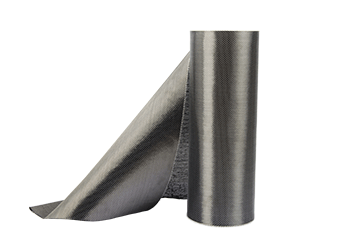Solutions
Horse Construction offers full range of structural strengthening materials with technical supports, documentation supports, products supports, project supports.
carbon fiber fabric reinforcement bridge
1 Overview
A mid-river bridge on National Highway 108 has a 3-20 m simple-supported post-tensioned pre-stressed hollow slab bridge. The hollow slab is prefabricated with C40 slabs. Each span horizontally consists of 6 hollow slabs, each with a length of 20 m and a width of 1.49 m. Fill the gaps and gaps with cast-in-place C40 small stones. The deck pavement adopts 9 cm thick C40 waterproof reinforced concrete + 6 cm asphalt concrete. The substructure is a double-pillar bridge pier. Bridge deck width: net 8.0 m roadway + 2 x 0.5 m railings, the design load level is highway-II level.
The bridge was completed and opened to traffic on October 12, 2009. About 2 years later, during the daily maintenance and management, it was found that there were multiple longitudinal and transverse cracks on the lower edge of the hollow slab. In order to comprehensively detect the cracks of the bridge body, on September 7, 2011, a professional inspection agency conducted a comprehensive inspection of the hollow slabs by selecting typical spans of the bridge. There are obvious longitudinal cracks across the lower edge of each hollow slab on the side of Hanyuan. The crack width is between 0.12-0.28 mm and the maximum crack depth is 68 mm. Analysis believes that the cracks at the lower edge of the hollow slab are mainly caused by improper workmanship during the construction process. Cracks on the lower edge of the hollow slab will not significantly affect the mechanical performance of the structure, but will affect the durability of the structure. Based on this quality defect, it was reinforced by crack grouting and pasting carbon fiber cloth. After the reinforcement at the end of 2011, it has been three and a half years since it was reinforced. No new cracks have been found. The engineering effect is remarkable, ensuring the normal operation and use of the bridge.
2 Crack detection
2. 1 Crack distribution detection
The location and direction of the cracks were inspected on site, and the crack development map was drawn. Through the distribution and development of cracks, analyze the types and causes of cracks. The tools for detecting crack location, extension length and direction are mainly steel tape measure and steel ruler.
2.2 Crack width detection
The crack width of a concrete structure is the width measured on the surface of the concrete and perpendicular to the crack direction. To measure the width of concrete cracks, you can use a reading microscope (see Figure 1), a crack scale (see Figure 2), etc.


2.3 Crack depth detection
The inspection of concrete crack depth generally adopts the ultrasonic pulse method. The detection instrument is a non-metal ultrasonic detector. The basic principle is to use the relative change of acoustic parameters such as the propagation time (or speed) of the pulse wave in the concrete with the same technical conditions, the amplitude and frequency of the received wave, to determine the concrete crack defects.
2.4 Test results
Select the Hanyuan side span with the most concentrated cracks to conduct a comprehensive inspection of the cracks in the hollow slab.
The distribution of cracks in the side span of Hanyuan is shown in Fig. 3'crack depth. According to the test results:
There are 1-3 longitudinal cracks on the lower edge of 1# -6# hollow slab, the width of the longitudinal cracks is between 0.12 -0.28 mm, and the depth of the cracks is between 36-68 mm;
There are traces of the horizontal construction process on the lower edge of some hollow slabs, which are determined to be non-concrete cracks through crack microscope and ultrasonic depth test;
According to the measured crack depth, none of the longitudinal cracks penetrated the bottom plate (the design thickness of the bottom plate is 120mm).

3 Reinforcement and maintenance scope
After crack sealing and grouting, all cracked hollow slabs are reinforced with pasted carbon fiber.
The carbon fiber reinforcement of this bridge is to use adhesive glue to paste carbon fiber cloth on the concrete hollow slab bottom plate to be reinforced, so that the carbon fiber cloth and the hollow slab members are stressed together to achieve the purpose of strengthening the cracked hollow slab structure. Carbon fiber reinforcement can improve the mechanical properties and durability of the hollow slab structure, and control the development of cracks or deflection.
4 In conclusion
The cracks on the lower edge of the hollow slab were grouted and sealed with carbon fiber cloth. It has been three and a half years and no new cracks have been found, indicating that the cause analysis is correct and the treatment measures are appropriate, which is worthy of reference for similar projects
You can find anything here you are in need of, have a trust trying on these products, you will find the big difference after that.

High strength carbon fiber reinforced polymer (CFRP) strip / laminate / plate for structural strengthening and concrete repair

High strength, unidirectional carbon fiber fabric pre-saturated to form a carbon fiber reinforced polymer (CFRP) fabric used to strengthen structural concrete elements.

High strength, unidirectional carbon fiber sheet pre-saturated to form a carbon fiber reinforced polymer (CFRP) sheet used to strengthen structural concrete elements.